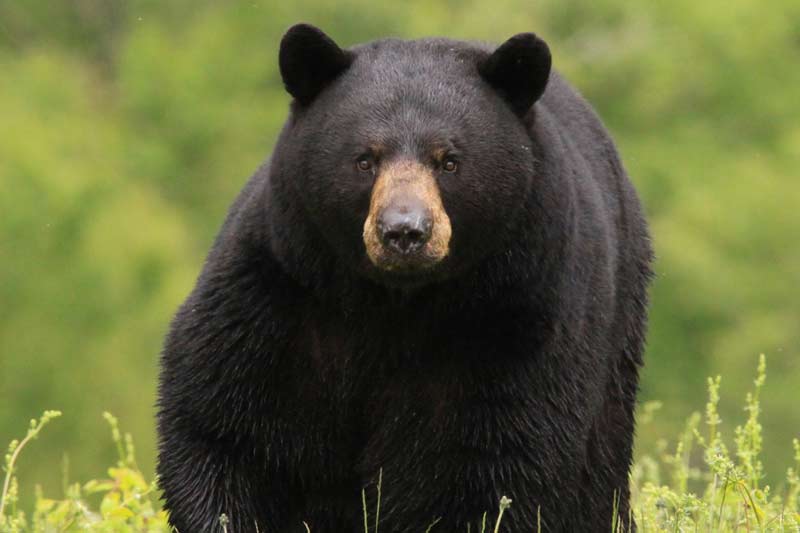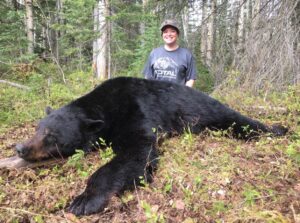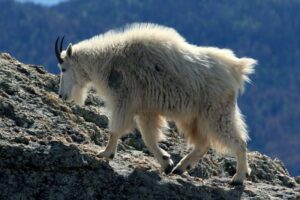Outfitters across North America prefer to hunt clients who want a trophy bear during the spring time, throughout this article I will define their reasonings and my own opinions on the matter to help clients kill their once in a lifetime trophy black bear. If you have already been researching black bear hunts in British Columbia then you will have notice no one sells a fall bear only hunt and if they do are generally very cheap. Below are the reasons for this.
- Success
After hibernation bears awake and are drowsy and still not functional yet, they will not stray far from their dens and will continue to sleep in the den for the first couple days. The common thought is that bears after awakening are extremely hungry and will eat non-stop, this is not true. Over the course of hibernation their stomachs have shrunk in size and they are physically not able to eat lots. They will eat for shorter periods of time approx. 15 to 30 minutes then return to thick cover for 1-4 hours to let their stomachs adjust and digest the food. Later during the season they will eat for longer periods of time and sleep less. Now you may be wondering what this has to do with success? Because of the bears eating-sleeping-eating patterns it causes the bears to become patterned. The bear will not sleep far from where it is feeding and will return to feed in the same area daily and more frequent then the fall where bears are roaming and feeding wherever they travel along the way. By capitalizing on this patterned movement the guides can pinpoint locations that trophy bears are feeding cause of size of scat and tracks. Success in the spring season varies province wide from 75% to nearly 100% whereas in the fall season success varies but is always lower. Fall hunting black bears is unpredictable and are often a hard animal to target, most bears taken are by opportunity.
- Density of bears due to food concentration
Every area is different in BC, but the concept is the same for all geological areas. Bears will be more concentrated in areas which become green with new growth first. Bears in the spring will look for the easiest meals, usually being patches of grass, mountain ash, clover and dandy lions. These areas are usually on south facing slopes with emphasis on previously seeded areas such as pipelines, deactivated roads and powerlines. Previously burned areas provide a great habitat for bears. Usually it takes two years after a burn has been through an area to provide enough undergrowth to hold bears. Burns are a great way to help animals, it gets rid of all the invasive weeds and thick cover, it will spread seeds and nutrient levels and organic matter comes back healthier and more enriched. As the season continues the feed for the bears expands, therefore the bears spread out as well. However this may not sound good but it leads into my next point.
- Rut
The rut in our northern concession starts the third week in May and continues until the third week in June. During this time the feed will be spread throughout the area, instead on concentrating on hunting smaller areas you will be much more successful by glassing large areas in search for trophy boars searching for sows, it is not uncommon to see a Boar and Sow together or two boars fighting over a Sow. Like any animal in north America the rut is often the best time to hunt. Bear movement will be at an all year high and big boars will be horny and constantly will be making mistakes. I personally prefer to take our archery hunters during this period cause of the reason boars are the easiest to stalk up on, their main focus is on the sow in heat and often pay very little attention to their surroundings.
- Hide Quality
Half the trophy in a black bear is its hide, everyone wants a thick full hide. Bears emerging out of the den after 6 to 7 months hibernating will have the nicest quality hides found. British Columbia is world renowned for having the best quality bears in the world, not only do we have the largest we have extremely long cold winters causing hides to be of best quality found anywhere in the world. In warmer climates the hides will be thinned out and often have mattes in them. Hide quality is best until the middle of June in BC, after that most bears are already rubbed or have been rubbing against trees to shed their thick coats. Clients can expect to harvest bears with 4 inches of hair during this time. During fall the hair isn’t as good as the spring but still better then average. If a client kills a bear in October though it will have unreal hair quality but chances of being successful is much lower to spring time.
- Hunting Season
Most of our clients are blue collar working people who hunt deer and elk throughout the states on their own during the fall season. A spring hunt offers a great opportunity for hunters to pursue their passion throughout the year. Most people do not hunt during the spring except for Brown Bear and some of Asia. A spring black bear hunt offers a great way to enjoy hunting throughout the year and not effecting your personal or other guided hunts during the fall season.
Through my personal hunting experience and guiding clients to trophy animals, I firmly believe a spring black bear hunt is far superior to that of a fall bear only hunt. I have been in the guiding outfitting industry since I was 14 years old and when it comes to fall hunting for any species I still recommend clients to purchase a black bear tag. It is relatively cheap tag to have in your pocket and there is still a good opportunity to harvest a bear of similar quality in the fall. If you would like more information about this hunt please fill out our contact form.
Written by Jacob Blair (Manager and Lead Guide)




